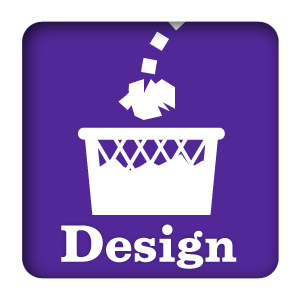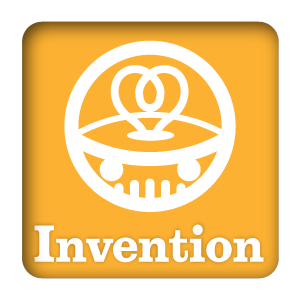In every bit of reporting about 2013 and 2014 that I’ve read about Apple’s future, there’s a wink and a nod towards the presence of something that’s been dubbed the iWatch.
This speculation has been unprecedented in tech history. Writers and analysts have assumed, as fact, that such a product is coming. Customers anticipate every Apple announcement as the opportunity to announce the product. It’s gone beyond certainty and borders on becoming a liability. How long until Apple stock tanks because there’s no iWatch?
Some can’t wait. Folks have taken existing Apple products, like the 2011 iPod Nano, iPod shuffle and iPhone and strapped them to a wrist band and called it the future. Not to mention that there’s suddenly dozens of new watch-like “fitness bands” on the market that tie in to iPhones and iPods.
This phenomenon has even spurned competitors to committing millions in developing and releasing iWatch-like products to grab marketshare from a product that is merely tech press speculation. Even more shocking has been Samsung’s release of the Galaxy Gear, a product that has been roasted in the tech press and was so rushed to market it only worked with one of their eleventy-billion models of phones.
The anticipation of what Apple might do next has broken through some kind of invisible barrier between the real world and idle speculation. Products now exist that were made, designed and marketed merely on the guess that Apple was going to make a similar product. This is borderline insanity.
What’d you just call me?
But there has to be something behind this, right? Indeed.
When the Google Glass project was unveiled, there was a lot of hyperbole about it, and it made a strong impression on consumers and pundits. Like Apple tends to do, they didn’t decide to break open a new market, they saw a market evolve, and then they decide if they want to do something. They saw this new category of “wearable computing” start to get some traction. Now they’re clearly exploring the idea.
This must have come as something of a surprise, because Google Glass is not a product that excels at what it does, and did not really advance the idea of eye-mounted computing. A lot of the interest in the device was centered not around practicality or utility, but around Google as a company. The most attention it gathered was focused more on privacy issues and distraction of its users. Was this the future? It was from Google and it was depressingly dystopic, so yeah, it had to be the future, right?
Don’t take my dystopia away from me
Fortunately, the product did not catch fire and the next generation of the product has not inspired anyone. But it did kick up enough dust for Apple to look at this phenomenon and try to figure out if it was worth exploring.
Shortly after the introduction of Google Glass, and in the midst of the short-lived Glass-Mania, Tim Cook was interviewed at the 2013 D11 conference about it.
“The likelihood that it [Google Glass] has a broad appeal is tough to see,” Cook said, while also saying that it would appeal to “vertical markets.” As to wearables, he was much more enthusiastic, saying it could be a “profound area.”
In regards to if wearables were a part of the post-PC trend, he said, “I see it as another branch on the tree.” He also said that Apple had been asking themselves these questions on wearables for several years and that the iPhone and iPad have accelerated the discussion.
The big pull quote from this interview was that Cook said “I think the wrist is interesting. I think the wrist is natural.” What most didn’t hear was his extension of that thought, which was that if they asked kids and young adults if they were watch-wearers, few would say they were. Further, that it would be only be clear over the arc of time how this was going to play out. Cook had also said that he’d know more at “D20” – a conference that would theoretically be nine years away from that interview.
From the “wrist is interesting” pull quote alone, a thousand column inches were written, and what most of them missed was Cook’s uncertainty of how wearables were going to develop, in what form, and even if it was a currently viable market.
What we’ve also read about is that Apple has been hiring in areas that could suggest an iWatch was in development. Apple has made executive hires from fashion retailer Burberry, fashion brand Yves Saint Laurent, and a designer of the Nike FuelBand.
See? Incontrovertible proof.
Unfortunately, further reporting revealed that the hire from Nike was not involved in the FuelBand project. The Burberry executive was hired to run the Apple Retail division, not for any product development. That kind of dampers those headlines.
But the Yves Saint Laurent executive, Paul Deneve, was hired for what was called “special projects” and is a direct report to Tim Cook, a very significant position. That could indicate his involvement in the iWatch. On the other hand, it should be noted that he was a previous Apple employee from 1990 to 1997, working at Apple Europe in sales and marketing.
I know less now than when I began reading this
Put everything together, and we have a pretty reasonable conclusion. Apple has been working on wearable computing as a concept for several years and now they’re working harder on the idea.
What we don’t have is a product ready or even near ready. In development, certainly, but not imminent.
What type of product are we talking about? Tim Cook’s statement about the wrist was not as certain as we may have been led to believe. He also said that glasses needed to be light and unobtrusive, and reflect the user’s sense of fashion, and all this would be “difficult.”
“There are other wearable ideas,” Tim Cook said. “The whole sensor field is exploding. It’s a little all over the place right now.”
I love explosions!
The preoccupation with the shape and look of “wearable computing” overlooks a basic notion. What the hey does a wearable computer do? Taking an iPhone and cutting it down to wrist size may have some appeal, but that’s not really a new device. It’s just a new way to carry an existing device.
A new device would have a new function. Apple’s Touch ID technology gives some insight into where their interest is. They might see their devices as mobile electronic identification, and could be a solution for unlocking homes and cars, as well as for secure financial transactions. A wearable device could serve a similar identity verification purpose with a higher degree of security than the fingerprint.
Apple has also shown interest in health applications, beyond exercise. They could develop a device that monitors not only just emergency health conditions but long-term health. IBM has been working on diagnosing patients using artificial intelligence, and if that proves to be a reliable way of monitoring health, a wearable device could ensure that the wearer will have the earliest possible indications of health issues and suggest avenues to improve health.
The original electronic wearables, headphones, are also due for an update. With wireless now finally able to produce high-fidelity sound, the idea of wired headphones may disappear quickly. A future generation of Apple earbuds could be two small in-ear buds that just exist independent of each other and the device, untethered. Headphones may also be the “in” for wearables. Folks are used to them, and the first generation of wearable computing could be based around them.
Finally, Apple has also been intensely pursuing accessibility features for their products, and making glasses that can enhance certain vision conditions could be a possibility. Also, using head-up displays could help those who can’t speak choose words for voice synthesis, help the paralyzed operate devices with fine control, and the deaf could get a speaker’s words captioned.
These are the sort of applications I’d expect from Apple in working on wearable devices, rather than just slapping the iPhone on your wrist. Wearable computing has a big future ahead for everyone, but not everyone can quite articulate what it will be. Without that, speculation on an iWatch misses the point. It’s not about the shape, the color, or the curved glass – it’s about the function.










